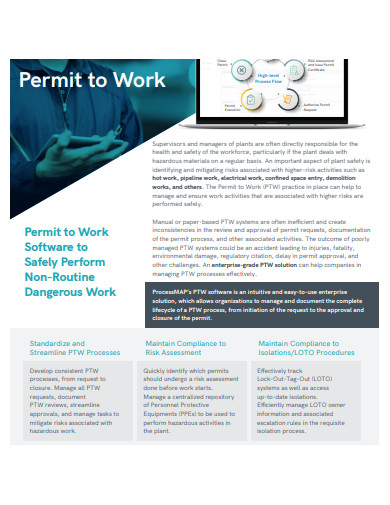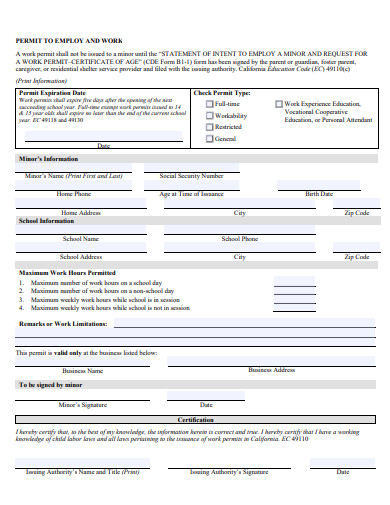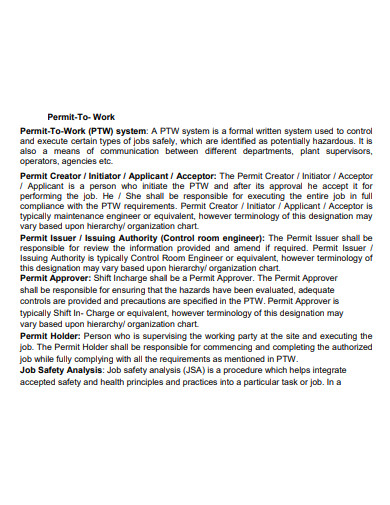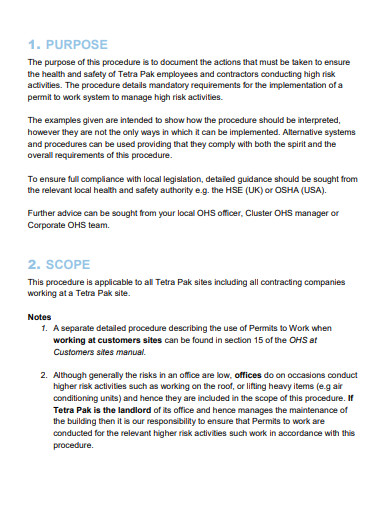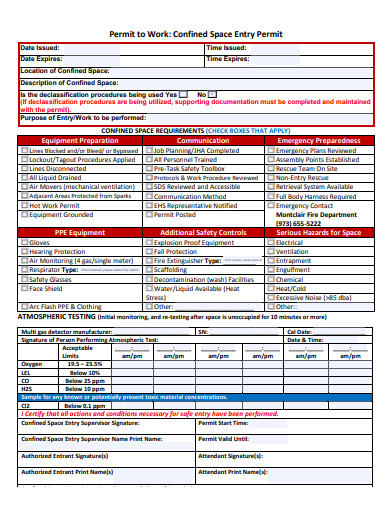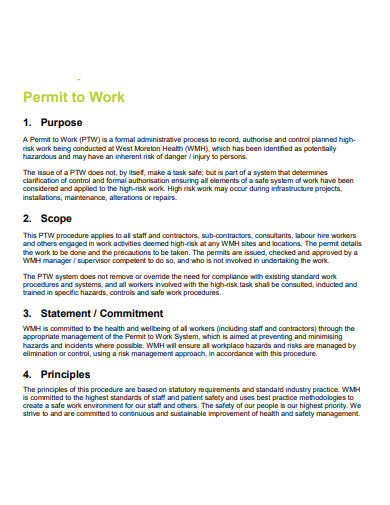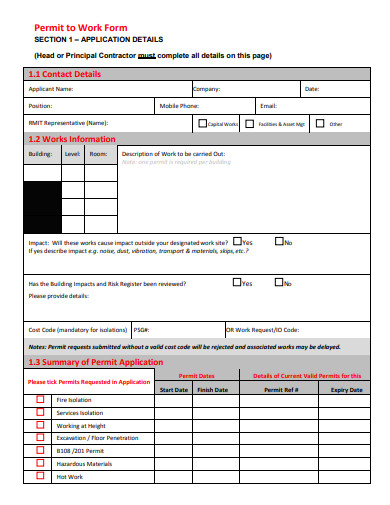Companies that operate under industrial work locations are full of health and safety hazards like sprays of sparks from welding, corrosive chemicals, confined spaces, energized electrical conductors, loose valve fittings, and more. There are also little incidents that can turn into major accident hazards if not addressed and managed properly. These situations can eventually lead to risks to the health and safety of workers, assets, as well as the environment. A permit to work is a document that is used to determine, relay, reduce, and control the possible risk in hazardous areas to prevent accidents.
6+ Permit to Work Samples
1. Permit to Work
2. Permit to Employee and Work
3. Sample Permit to Work
4. Simple Permit to Work
5. Formal Permit to Work
5. Permit to Work Example
6. Professional Permit to Work
7. Permit to Work Form
What is a Permit to Work?
A permit to work is an important document to ensure frontline worker safety which limits the effect of human error, makes sure that there are no sudden hazards during an operation, and helps in coordinating risks across the entire construction or work site. This permit is commonly used in the Health and Safety industry to reduce the risks of welfare during a high-risk operation. It is also a documented management system that contains particular processes to request, document, review, and allow tasks to be completed by assigned team members.
How to Use a Permit to Work?
To reduce the risk to their safety, workers need a permit to work to ensure that they are aware of the specific hazards in their work sites and be informed of the necessary precautions during their work operations. This permit also ensures the communication between the production and maintenance teams during the entire work process, from planning, preparation, and execution to handover and restoration of normal operations.
Step 1: Make Sure that all Dangerous Work is Eliminated or Reduced
To ensure that all job hazards are reduced or eliminated, make sure that you have good designs in your equipment, process, and work. Good equipment design is achieved by minimizing, substituting, moderating, and simplifying equipment interactions.
Step 2: Draft a Plan for Maintenance Work in Advance
Every job varies and can expose employees to different combinations of health and job safety risks in the field. Planning your maintenance work ahead of time allows you to anticipate and prevent unnecessary risks. After planning, you also have to prepare the work site in advance which includes site inspections to check maintenance systems.
Step 3: Write a Permit to Work
A permit will be written based on the work order or job card. The person in charge of authorizing the permit will sign it with the person in charge of the fieldwork. The document will record the names and signatures of the crew or team members who will be assigned to the operation. While creating the permit, certain work hazards and necessary precautions will be identified.
Step 4: Start Working in the Field
After securing the necessary PPEs, the permit will be issued and the fieldwork will commence. To become a legally binding contract agreement, the permit has to be formally issued and accepted by the appropriate parties. It must contain important information about the tasks to be performed and accomplished, identified work hazards, the precautions that the team has to take, and the names of the members who will complete the work.
FAQs
What are the types of permits to work?
There are various types of permits to work you can use based on the nature of your job. This includes the Hot Permit or Hot Work Permit, Cold Permit, Confined Space Permits, Electrical Permits, Ground Disturbance Permits, and Breaking Containment Permits.
What elements does a permit to work include?
A permit to work includes key elements such as the identification of hazardous areas, types of work that are considered hazardous, the scope of work and its risks, the person to authorize the hazardous work, work supervisors, determining permitted duration or the hazardous task, and more.
What is the importance of a permit to work?
A permit to work is an important document that is necessary for the control management of work systems of any business or company and is created to manage and reduce the possible risks that team members may encounter in their daily operations.
Businesses or companies from any industry can use a permit to work but this document is mostly used in industries that engage with dangerous processes like construction and manufacturing which handle more risks than other organizations and had to put team members into situations or operations that can get them hurt. With a permit to work, companies can document and perform risk analysis and train their employees to inform them of when, how, and why their work is important and needs to be accomplished.
Related Posts
-
FREE 10+ Parking Lot Permit Application Samples in PDF | DOC
-
FREE 10+ Cost Comparison Samples in PDF | MS Word
-
FREE 10+ HR Records Samples in PDF | MS Word
-
FREE 10+ Vendor Contact Samples in PDF | MS Word
-
FREE 10+ Process Documentation Samples in PDF | MS Word
-
FREE 10+ Opening Hours Samples in PDF | MS Word
-
FREE 10+ Merger and Acquisition Template Samples in PDF | MS Word
-
FREE 10+ Title Page Samples in PDF | MS Word
-
FREE 10+ MLA Format Samples in PDF | MS Word
-
FREE 10+ Brand Audit Samples in PDF | MS Word
-
FREE 10+ Requirements Gathering Samples in PDF | MS Word
-
FREE 10+ Employee Offboarding Samples in PDF | MS Word
-
FREE 10+ Bid Comparison Samples in PDF | MS Word
-
FREE 10+ Brand Story Samples in PDF | MS Word
-
FREE 10+ Brand Pyramid Samples in PDF

